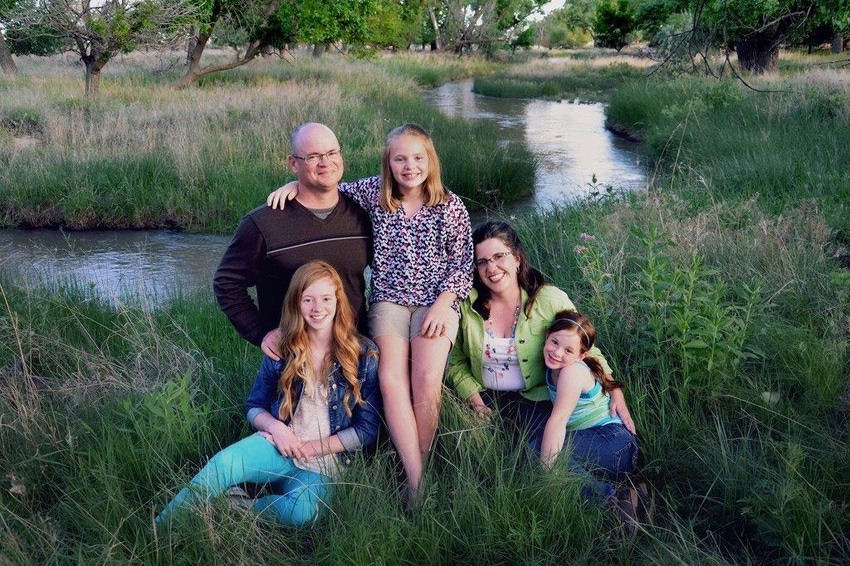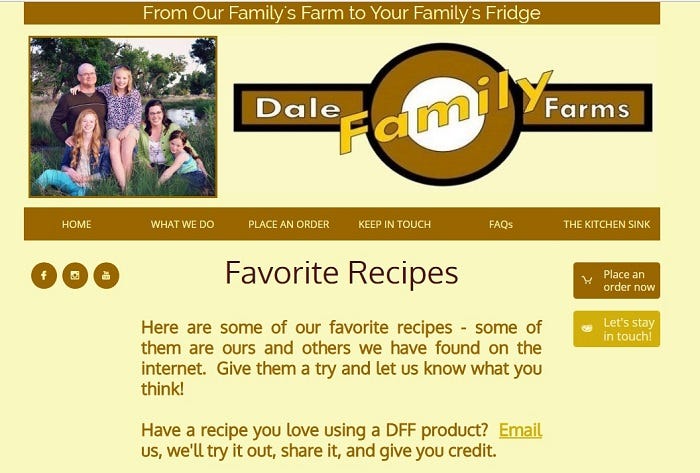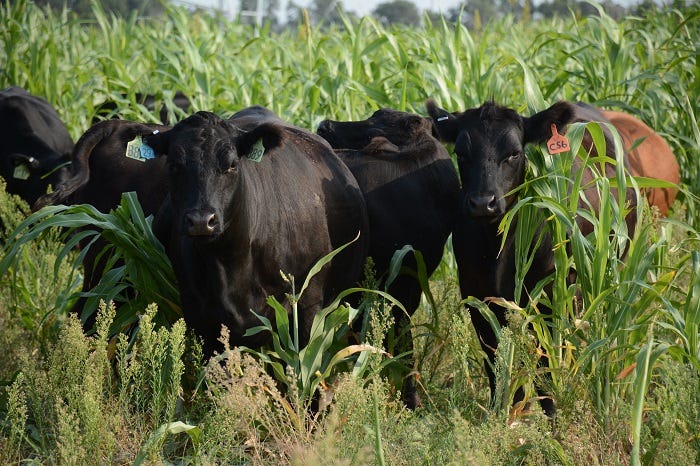
Kurt and Andi Dale have achieved success with direct-to-consumer marketing many people would believe impossible.
The Dales live just outside tiny Protection, Kansas, population 514. Protection is in southwestern Kansas, in Comanche County, for which the 2010 census lists the entire population at 1,891. The closest city of any reasonable size is Dodge City, Kansas, with a population of 27,000 -- 60 miles away. Liberal, Kansas, which has an estimated population of just over 20,000 is 90 miles away. Amarillo, Texas is 230 miles. Wichita, Kansas, is 140 miles. Kansas City, Kansas, is 344 miles.
You get the picture. By common thinking, the Dales don't live close to any significant number of likely consumers for farm-raised and grass-finished beef, chicken, pork or turkeys, which is the bulk of their product line.
Yet in the past 11-12 years they have built a farm-to-consumer marketing business that allows Kurt to work full-time on their relatively small farm and now has let Andi quit her teaching job and concentrate solely on their business.
Friends, family & more
The basis of their success might be called relationship marketing, although that term is sometimes filched by pyramid marketing companies, and sometimes oversimplified to the definition of "forming long-term relationships with customers."
The Dales used relationships to begin building their business when they first asked five brothers and sisters and their families to tell friends and coworkers about Kurt and Andi's new business and to sponsor what the Dales call "Tupperware parties" for farm-fresh, pasture-finished meats. This first effort stretched all the way to Kansas City.
The Dales depend heavily on word-of-mouth marketing to this day, which depends on relationships. They invite customers to the farm whenever they will come. They hold an annual dinner and celebration for their customers, again fostering relationships.
It began for the Dales when they moved home in 1995 so Kurt could farm with his dad. Kurt and Andi moved to the farm to take over operations from Kurt's parents in 2006. They had been selling some farm-fed beef as quarters each year and tried feedlot finishing a larger number, but didn't like the expense and low returns.
After taking a Dave Ramsey financial management course, a Holistic Management International course, and then reading some of Joel Salatin's books, the Dales began to look seriously at diversifying their farm production and direct marketing the products to consumers.

Customer service: Recipes for their products have become an important service from the Dale family to their customers, many of whom have little experience with real cooking of real foods.
Small beginning
They raised their first 25 pastured poultry broilers in 2008, and while it was not a magical wonder, it was a great learning experience.
"Poultry helps sell other items," Andi now says, explaining that variety in product offerings offers more opportunity to capture consumer dollars. For example, she calls pastured eggs a "gateway drug" for consumers to try pastured products because they can get a nice product for not a lot of money or risk.
That's why the Dales recently added pastured pork to their repertoire, and began three years ago raising and selling a few turkeys for the holidays.
"Although beef is the locomotive that pulls the train," Kurt adds.
Big reach
These days their products sell to consumers in the Kansas towns and cities of Wichita, Dodge City, Liberal, Pratt, Kansas City and others.
The Dales use a combination of deliveries to homes and to central locations, on-farm sales, and farmers markets to actually put product in the hands of consumers.
Their marketing is intertwined with those things, and includes internet sales, direct mailings, email sales, their own Dale Family Farms Facebook page and a steady presence on the "foodie" websites www.eatwild.com and www.localharvest.org. Their webpage can be seen at www.dalefamilyfarms.com.
In fact, it is this "foodie" movement wherein people want to reconnect with the suppliers of their foods that has helped drive the Dale's successes.
"A lot of people just want to know where their food comes from," Kurt explains.
"We find if people actually come to the farm we tend to have them as customers for a very long time," Andi adds.
Bringing people to the farm has further great advantage because it eliminates the hassle and costs of delivery. Yet making deliveries has helped build a business for the Dales. Kurt explains it also helps move inventory, as do the farmers' markets, which is better than holding leftover inventory for long periods.
Although they have some requests for organic products and GMO-free products, the Dales don't want to jump through all those hoops and have been able to grow their business steadily without going to such lengths.
They also have become steadily more people friendly, which of course is a key requirement. For example, they have found young consumers need detailed cooking instructions. They responded with meat packaging that includes appropriate handling instructions, recipes and shopping lists.
Although they experimented with restaurant and grocery-store business, but found the lack of customer contact turned it from a service-oriented operation with relatively consistent sales volume into a wholesale/retail business with greater uncertainty.
Instead, the relationships the Dales forge with their customers are consistent and real, as evidences partially by their repeat sales and also by the fact they've only had two bad checks in the first 11 years. But it takes time, a people-friendly personality, attention to detail, and hard work, they say.

Forage matters: Kurt Dale uses a combination of well-recovered native grasses and lightly irrigated annual forages to produce the beef they sell at reasonable cost.
Thriving on perseverance and faith
Kurt and Andi Dale say each move they've made to gain new market opportunities or market share in their farm-to-consumer business has required a leap of faith and then steady perseverance.
For example, as they grew their beef business, because they can finish beef best in the growing season they needed to build some storage, which cost money and put unsold product sitting on freezer shelves. When they decided to try growing holiday turkeys, the first batch got loose and started roosting on the porch. The second batch was seriously thinned by predators. The third batch made it through to the holidays they've been selling well ever since.
In fact this is another form of perseverance: "Kurt's willingness to rethink how to do things to make them work, even though it failed or didn't work very well the first time has been one of the real keys to our success," Andi says.
Kurt adds, "Being the middle man is not low-hanging fruit. Those are hard, hard dollars to earn."
About the Author(s)
You May Also Like




